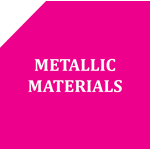Projektinitiativ #72: Development of coated SENs to improve the preheating and casting performance ( 3 kommentarer)
It is well known that a cost efficient steel production requires longer casting sequences without production stops due to clogging. It is also a fact that clogging has been a difficult problem for a long time, but that still need to be studied in order to come close to a solution. Here, one important part is the refractory material of the submerged entry nozzle (SEN).
Previous research has shown that the refractory in the SEN will change due to chemical reactions during the preheating of the SEN as well as during casting. Previous research has also shown that a coating of the internal surface can prolong the SEN’s life and also protect the SEN from decarburization during the preheating. This decarburization is caused by a high oxygen activity near the inner wall of the SEN. After this has happened, a deposition of a first layer mostly containing for example alumina or cerium oxide particles is easily formed onto the decarburized surface.
Therefore, the suggested research will be directed towards finding a suitable coating material that prevents both decarburization and accretions of clusters. The most relevant steel grades, refractories and coatings will be discussed with the participating steelmakers and refractory suppliers.
Preliminary the following research tasks are suggested to develop of a new coating material that will protect the SENs inner surface from decarburization during the preheating operation.
• Laboratory trials to study the decarburisation of the coated ceramics including CaTiO3 and YSZ coating materials, which have been studied previously. This will result in the selection of coating materials to be tested in industrial trials
• Preparation of coated SENs. This will include techniques of coating the SEN with an appropriate and even layer of the selected coating material. Some initial tests have been carried out using plasma coating and application of paint by using a brush, but alternative methods will be studied.
• An optimisation of the preheating process to decrease the overall decarburisation. This will initially be tested in Later, this will be tested in preheating trials.
• Decarburisation trials to determine the most suitable coating material and preheating process.
• Casting trials including post mortem studies of the SEBNs after casting. Here, it is important to compare the results with results from uncoated SENs.
Pär Jönsson, Voicu Brabie, Jennie Svensson and Andrey Karasev – Division of Processes, KTH Materialvetenskap
Namn Pär Jönsson
Organisation KTH Materialvetenskap
Kommentar #1
Projektet har en stark koppling till projekt #53 vilket visar på intresset från branchen att lösa problem med igensättning. Kompetensen hos förslagsställarna är stark inom studier av reaktioner, mätteknik och sammansättning av inneslutningar.
Tidigare försök har gjorts och för att klara de praktiska tillämpningarna är viktigt att man tittar på befintliga lösningar inom tillverkning och belägging av gjutrör, kanske finns kompetensen redan hos tillverkare av gjutrör/gjutpulver. På så sätt kan nya rön och tekniker snabbt överföras till fullskaliga försök med hög repeterbarhet.
Namn Teknik Stålverk Avesta
Organisation Outokumpu Stainless AB
Kommentar #2
Intressant att utveckla nya material i gjutrören för att hindra/lindra igensättningar. Genom att lösa igensättningsproblem vid gjutning möjliggörs stränggjutning av nya stålsorter och därmed ökar utbytet markant. Detta ger besparingar i form av minskad material- och processkostnad. Instämmer med ovan kommentar om att intitiativ #53 är närliggande och det behövs kompetens från flera expertområden.
Namn Karin H Antonsson
Organisation Sandvik Materials Technology, R&D Metallurgy
Kommentar #3
Liksom i initiativ #53 finns klara synergier med stålgjuterier som använder bottentömmande skänk för komponentgjutning.
Namn Åsa Lauenstein
Organisation Swerea SWECAST AB

